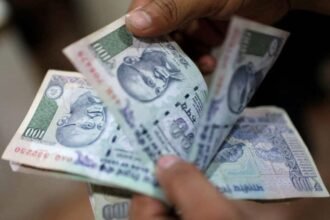- What is currency, and is it the same as cash or money?
- What is the global currency market?
- How large is the global currency market?
- How are these cross-border payments made?
- Why do currency values differ?
- How are currency exchange rates determined?
- Who are the major participants in the global currency markets?
- What role does the Bank of International Settlements play in the currency markets?
- The bottom line

Is this currency, cash, and/or money?
© Wara1982—iStock/Getty Images
Currency is a fairly easy concept to understand as long as we focus on a single one. For instance, in the United States, everything is priced in dollars. When we think of “monetary value,” the concept is probably tinged with a shade of green along with the images of some dead presidents.
Within a single currency regime, the prices of products may vary, but the price of money (dollars) appears pretty stable. After all, $1 will always equal $1.
But as soon as we buy or sell products abroad, the idea of currency gets a little complicated. Now we’re talking about “cross-border payments,” where the buyer and seller are in different countries. What makes this complex is that the values between two currencies don’t have a fixed match. They are always changing. Although $1 may buy you €0.90 (euro) today, perhaps eight months ago, that same dollar might have bought you €1.04.
Not only does the relative value of the dollar and euro (what pros call a currency pair) change every second of the day, every currency’s relation to every other currency in the world is different, too. They’re all tradable at different currency exchange rates, and these rates are constantly fluctuating, as most have floating exchange rates.
Foreign exchange. Currencies. Money. These are massively complex topics. But here are a few basic questions (and answers) to give you an understanding of how money flows across the globe, who the major players are, and why it all causes many people to scratch their heads in confusion.
What is currency, and is it the same as cash or money?
Let’s start off by getting these ideas straight. Currency, cash, and money are all related terms that are often used synonymously, but they’re not the same thing.
- Currency is a medium of exchange that two parties (typically countries) recognize and accept. It usually takes the form of digital or physical banknotes and coins.
- Cash is physical money, like (paper) banknotes and (metal) coins. If it’s intangible, like money in your digital bank account, then it’s “currency,” but it’s not “cash.”
- Money is the network of value that gives currency, cash, and other forms of monetary assets their purchasing power.
What is the global currency market?
There’s no single “market” through which people, businesses, and governments exchange currency. There’s no one-stop-shop, mega-mart for money. Instead, there are multiple electronic trading networks through which these parties exchange currency.
How large is the global currency market?
According to the Bank for International Settlements’ October 2022 Triennial Central Bank Survey, around $7.5 trillion changed hands per dayas of April 2022—up from $6.6 trillion three years before.
That’s a lot of money to change hands in the course of a single day, don’t you think? Well, the foreign exchange market is the largest market in the world, as everything traded across borders has currency values attached.
In other words, the foreign exchange market isn’t just banks and traders buying and selling money. Before any raw material or finished good is imported or exported—soybeans, crude oil, automobiles, Swiss watches, you name it—it’s converted into and out of foreign currency.
How are these cross-border payments made?
Because most people and businesses keep their funds in some form of regulated bank, cross-border payments are pretty much a matter of sending money from a buyer’s bank to a seller’s bank. So, how do most people and institutions do that? Through international wire transfers. Two cross-border payment networks you may have heard of are SWIFT and IBAN.
SWIFT, which is short for Society for Worldwide Interbank Financial Telecommunication, is a global messaging network used by financial institutions to send and receive info such as money transfer instructions. IBAN, short for International Bank Account Number, is a global numbering system for individual bank accounts that’s used to facilitate cross-border transactions. Banks often require both numbers to send money overseas, but each bank will work primarily with one system or the other, depending on its country of origin.
There are other means of transferring money from one party to another—from those automated clearing house (ACH) electronic transactions to peer-to-peer blockchain networks—but for most people and institutions, money is transferred from bank to bank.
Why do currency values differ?
If you’re new to the concept of exchange rates, then it might seem a bit strange that some currencies may be more or less expensive than other currencies. After all, we’re used to thinking about the price of goods and services, not the price of money itself. But yes, prices vary between currencies.
It’s a supply and demand thing. If there’s more demand for a certain currency, prices will likely get bid higher (as with any product sold at auction). If there’s less demand for a currency, then prices will likely get offered progressively lower until supply and demand reach relative equilibrium.
That’s a simple explanation. In actuality, there are multiple factors that affect the demand for money, from market speculation to the overall economic health of a currency’s issuing country.
How are currency exchange rates determined?
Currency exchange rates can be difficult to grasp for a couple of reasons:
- They’re never really fixed (they change from second to second).
- They vary slightly depending on who’s buying and selling.
Currency exchange services, banks, and currency trading platforms may have slightly different bid/offer prices, believe it or not. Although these differences are typically just fractions of pennies (in dollar terms), they can really add up when the value you’re trying to convert is in the hundreds of thousands to millions (or billions) in currency.
Currency exchange rates are constantly determined by the markets, 24 hours a day, every day (except for weekends and certain holidays when banks are closed). In short, money never sleeps.
Who are the major participants in the global currency markets?
Anyone who needs to convert their money from one currency to another is a participant in the global foreign exchange market. For instance, if you’re in the U.S. and you purchase chocolates from Spain, where goods are priced in euros, you’re taking part in this market by converting dollars to euros.
But the main players can pretty much be summed up as follows:
- Central banks control a country’s monetary policy, meaning they exert the strongest influence over a country’s interest rates and, in general, the value of a country’s currency.
- Commercial banks and financial institutions participate in the global currency markets for their own profit or on behalf of their clients.
- Multinational corporations involved in the import and/or export of goods participate in the currency markets to pay for goods and services.
- Hedge funds and investment managers trade currencies as part of their investment strategies. Some may speculate in currencies directly, while others trade currencies in order to buy international assets as part of a diversification strategy.
There are plenty of other participants who trade in the currency markets—from government agencies down to individual retail speculators—but these institutions are the market’s biggest players.
What role does the Bank of International Settlements play in the currency markets?
If a central bank is like the bank of all banks in a given country, then the Bank of International Settlements (BIS) is like the bank for all central banks. Established in 1930 and owned by 63 central banks, the BIS represents countries that make up around 95% of the world’s GDP. Its goal is to foster financial and monetary collaboration among the central banks of the world and to provide banking services to central banks.
Although the BIS doesn’t participate in the currency markets directly, it does play a crucial role in facilitating communication among central banks and fostering global monetary and financial stability. These arguably have a significant, albeit indirect, influence on the global currency markets.
The bottom line
The world of currency and cross-border payments is a complex ecosystem with multiple key players, including individuals, corporations, central banks, and governments. The fluctuating nature of exchange rates adds another layer of complexity to this global monetary mix.
Despite its complexity, understanding this global system is crucial in our increasingly interconnected world where goods, services, and capital frequently cross national boundaries. Understanding the basics of currency, cash, and money and their roles in this system is the first step in navigating this much larger and more intricate global network.


















